In the absence of any influences the SAN pacing rate would be 100 bpm however heart rate and cardiac output must be able to vary in response to the needs of the body. SA node AV node AV bundle Purkinje fiberscell gap junctions.

Sinoatrial Node An Overview Sciencedirect Topics
These pacemaker cells can spontaneously generate electrical impulsesThe wave of excitation created by the SA node.
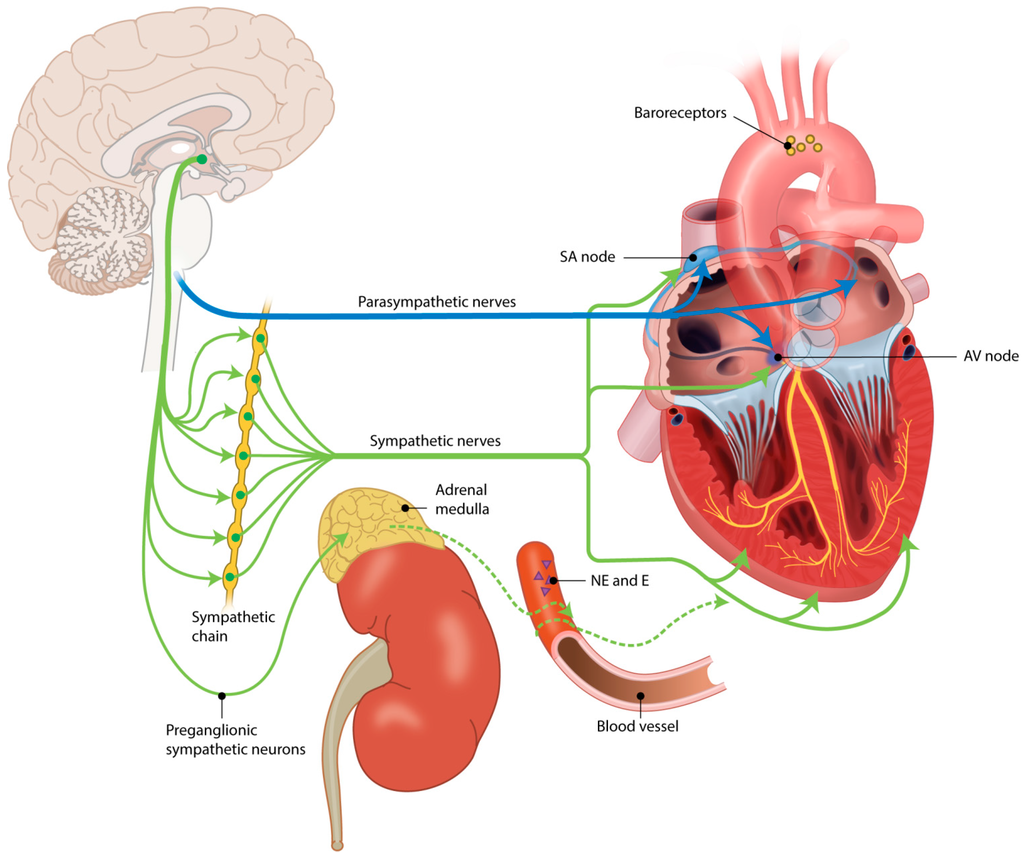
Sa node innervation. In modifying cardiac activity the parasympathetic innervation comes from the cardioacceleratory center in the brain and the sympathetic innervation comes from the cardioinhibitory center in the brain. Components of the Cardiac Conduction System Sinoatrial Node. Pacemaker The left AV valve is forced __ when the left ventricle begins to contract __ blood back flow into the left atrium.
Unlike smooth or skeletal muscle which require neural input for contraction cardiac fibers have their own pacemaker cells like the sinoatrial SA node that spontaneously depolarizes. The vagus innervation ends at the junction between the midgut and hindgut just before the splenic flexure of the transverse colon. It is the first component of the cardiac conduction system and is composed of specialized cardiac muscle cells which are bundled together into a node within.
The action potential generated by the SA node immediately spread to the atrial muscles and atria contract. It is considered to be a normal heart rate during sleep in young healthy or elderly adults and in athletes. 1621 The most frequent example of these is reentry SVT Class I.
Testes receive autonomic sympathetic innervation from the spermatic plexus originating from the para-aortic ganglia. Aesthetically it serves as an area where hair can grow and physically as a barrier that defends the body from. In some people bradycardia below 60 BPM may be associated with fatigue weakness dizziness sweating and fainting.
Adenosine is recommended for the following indications. Arrest of testicular descent. The sinoatrial SA node or the __ sets the rate of the hearts contractions by sending action potentials through the specialized conduction fibers to the atria.
Bradycardia also sinus bradycardia is a slow resting heart rate commonly under 60 beats per minute BPM as determined by an electrocardiogram. The scalp is composed of soft tissue layers that cover the cranium. The ductal embryology of the pancreas is moderately complicated leading to a number of anatomical variants of the pancreatic ducts many of which are clinically significant.
May arise from the testes and have a variable incidence. By influencing the cells in the SAN nerve impulses and hormones can affect the speed at which. The sinoatrial node better known as the sinuatrial or SA node is the key structure responsible for the generation of a regular heartbeat and is therefore often referred to as the pacemaker of the heart.
The main pacemaker is a collection of cells on the border of the atria and vena cava called the sinoatrial node. Polyorchidism very rare bilobed testes. This rhythm can be influenced by autonomic innervation.
The sinoatrial SA node is a collection of specialised cells pacemaker cells and is located in the upper wall of the right atrium at the junction where the superior vena cava enters. These depolarizations occur at a consistent pace but the pacemaker cells can also receive input from the autonomic nervous system to decrease or increase the heart rate. It extends from the superior nuchal lines and occipital turbulences to the supraorbital foramen.
The SA node automatically generates action potentials at a specific rhythm that determines the heart rate. Thought to be a variant of polyorchidism. Gross anatomy The normal arrangement is for the entire pancreas to be.
In the meantime this action potential is carried by the AV bundle to the AV. Adenosine is an endogenous purine nucleoside that briefly depresses AV node and sinus node activity. It is an anatomic region bordered anteriorly by the human face and laterally and posteriorly by the neck.
The sympathetic nervous innervations increases the rate at which the SA node fires. The heart rate is established by the Sinoatrial Node SAN - the pacemaker of the cardiac muscle. The parasympathetic nervous innervation decreases the rate of firing and subsequently the heart rate and produce a normal heart rate.
However in disease conditions either or both of these nerves may dominate and produce a fast or a slowed heart rate. For defined stable narrow-complex AV nodal or sinus nodal reentry tachycardias.
Why Does Sympathetic Nerve Affect Relaxation Speed Of Heart But Parasympathetic Nerve Doesn T Quora

Anatomy Of The Sympathetic And Parasympathetic Innervation Of The Download Scientific Diagram

Innervation And Neuronal Control Of The Mammalian Sinoatrial Node A Comprehensive Atlas Circulation Research
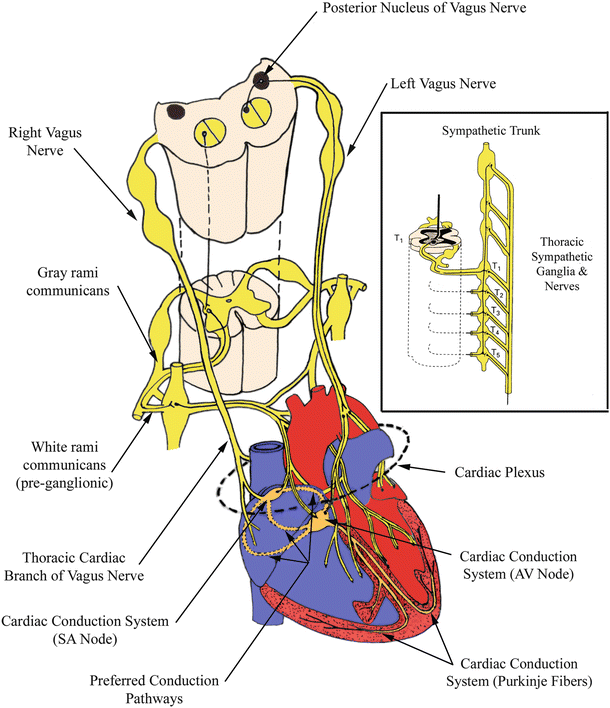
Autonomic Nervous System Thoracic Key

Cv Physiology Regulation Of Pacemaker Activity

Schematic Representation Of Heart And Blood Vessels Innervation By The Download Scientific Diagram
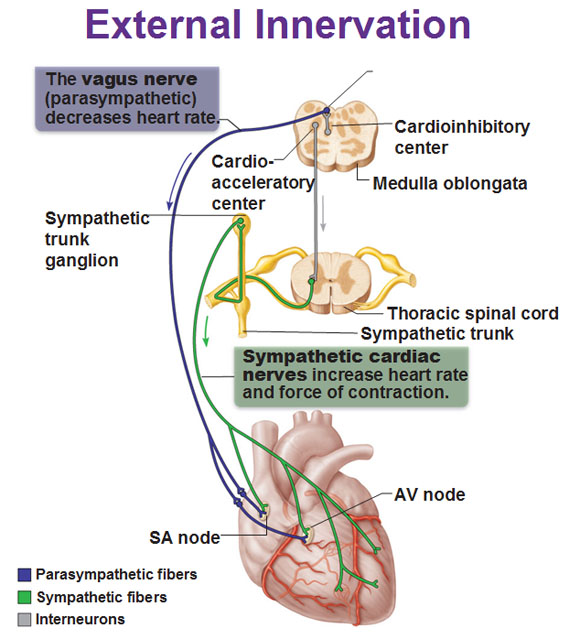
Conducting System Of The Heart

Cv Physiology Autonomic Innervation Of The Heart And Vasculature

Jcdd Free Full Text Postnatal Cardiac Autonomic Nervous Control In Pediatric Congenital Heart Disease Html

Cr Pictures Flashcards Practice Test Quizlet
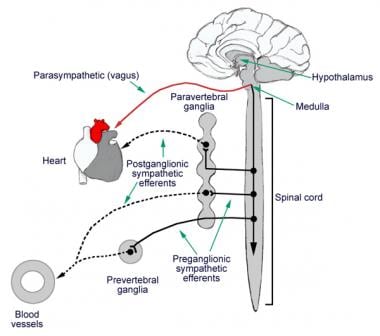
Heart Nerve Anatomy Overview Gross And Microscopic Anatomy Pathophysiologic Variants
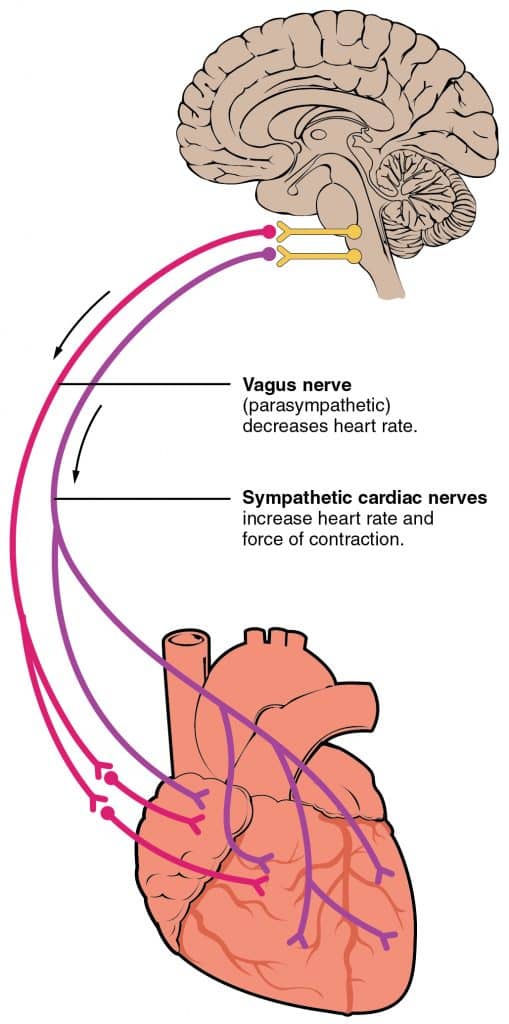
Control Of Heart Rate Autonomic Nervous System Teachmephysiology
Autonomic Innervation Of The Heart

Overview Of Cardiac Innervation A Schematic Drawing Of The Cardiac Download Scientific Diagram

Physiology Of Cardiac Conduction
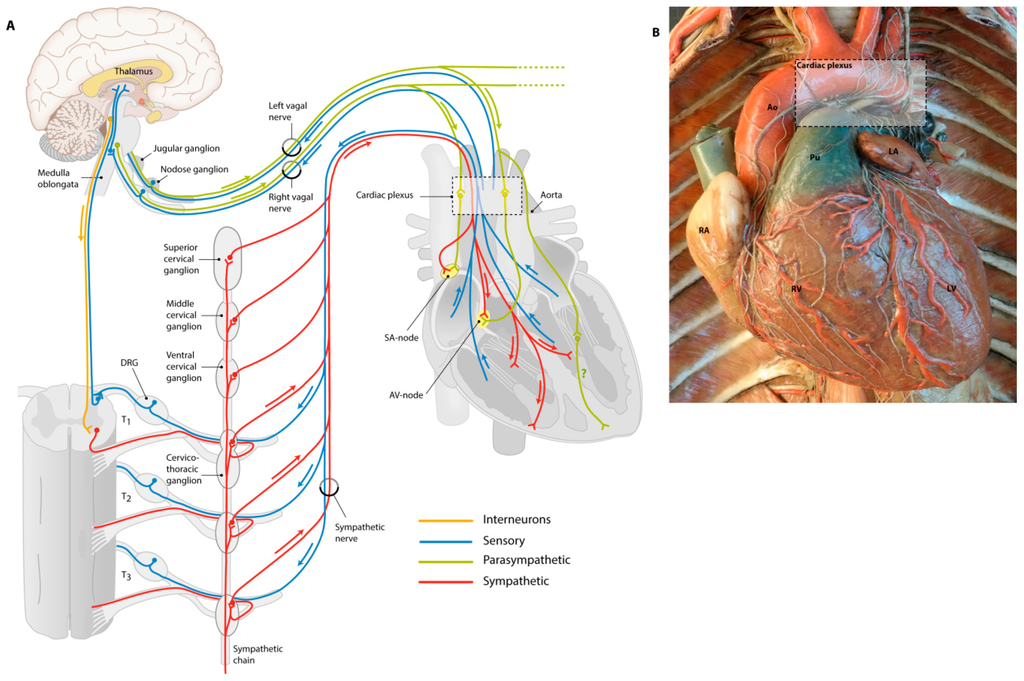
Jcdd Free Full Text Part And Parcel Of The Cardiac Autonomic Nerve System Unravelling Its Cellular Building Blocks During Development Html

Conduction System Of The Heart 4 Faisal I

Introduction To Cardiac Physiology Electrophysiology Tusom Pharmwiki

0 comments:
Posting Komentar